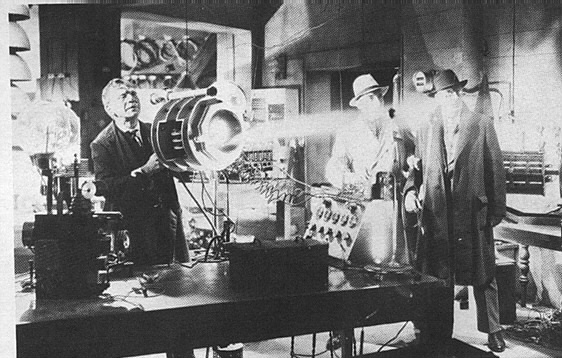|
|
Material
|
χm=Km-1
(x
10-5)
|
|
Paramagnetic
|
|
|
Iron
oxide (FeO)
|
720
|
|
Iron
amonium alum
|
66
|
|
Uranium
|
40
|
|
Platinum
|
26
|
|
Tungsten
|
6.8
|
|
Cesium
|
5.1
|
|
Aluminum
|
2.2
|
|
Lithium
|
1.4
|
|
Magnesium
|
1.2
|
|
Sodium
|
0.72
|
|
Oxygen
gas
|
0.19
|
|
Diamagnetic
|
|
|
Ammonia
|
-.26
|
|
Bismuth
|
-16.6
|
|
Mercury
|
-2.9
|
|
Silver
|
-2.6
|
|
Carbon
(diamond)
|
-2.1
|
|
Carbon
(graphite)
|
-1.6
|
|
Lead
|
-1.8
|
|
Sodium
chloride
|
-1.4
|
|
Copper
|
-1.0
|
|
Water
|
-0.91
|
|
Here
the quantity Km is called the
relative permeability, a quantity which measures the ratio of the internal
magnetization to the applied magnetic field. If the material does not
respond to the magnetic field by magnetizing, then the field in the
material will be just the applied field and the relative permeability Km =1. A positive relative
permeability greater than 1 implies that the material magnetizes in
response to the applied magnetic field. The quantity χm is called magnetic susceptibility,
and it is just the permeability minus 1. The magnetic susceptibility is
then zero if the material does not respond with any magnetization. So both
quantities give the same information, and both are dimensionless quantities.
For ordinary solids and liquids at room temperature,
the relative permeability Kmis typically in the
range 1.00001 to 1.003. We recognize this weak magnetic character of common
materials by the saying "they are not magnetic", which recognizes
their great contrast to the magnetic response of ferromagneticmaterials. More precisely, they are either
paramagnetic or diamagnetic, but that represents a very small magnetic
response compared to ferromagnets.
The
gases N2 and H2 are weakly diamagnetic with
susceptabilities -0.0005 x 10-5 for
N2 and -0.00021 x 10-5 for H2. That is in contrast to the large paramagnetic susceptability
of O2 in the table.
|





0 Comments